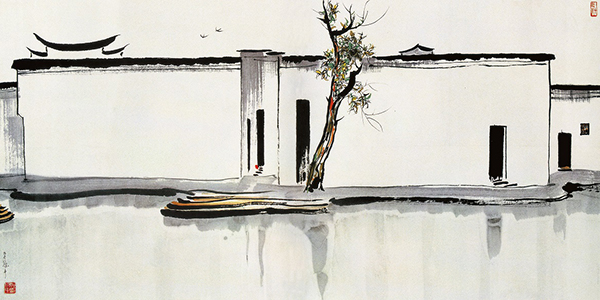 |
|
Wu Guanzhong's two paintings, both titled Twin Swallows, will be auctioned in Beijing on Thursday by Poly International Auction. The oil on canvas was completed in 1994, and a classic Chinese ink piece in 1988. [Photo provided to China Daily] |
According to Wang Luxiang, a researcher at China National Academy of Painting in Beijing, Wu began exploring the Jiangnan motif after he attended classes given by art professors of the former Soviet Union in Beijing, in the early 1950s. Wu, a graduate of oil painting at the prestigious National High School of Fine Arts in Paris, then taught at the Central Academy of Fine Arts in Beijing.
Wang says Wu had heard the Soviet-era lecturers say that Jiangnan was not a suitable subject for oil painting, because, unlike Europe, it rained heavily throughout the year in the region, thus the architecture and the views were drab, and it was difficult to distinguish the land and the sky, both awash with gray.
"In much disbelief, Wu began traveling frequently to Jiangnan from the 1960s onward," Wang says. "He sketched and experimented. He wanted to find an approach to depict the poetry and elegance unique to Jiangnan that could be presented in both Chinese and Western forms."
Wu finally found it after a two-decade effort.
"He succeeded in choosing a grayish silver as the dominant tone of his palette. He was inspired after his long gazes at local houses.
"He also found in the structure of these buildings the clean-cut combination of dots and lines. His paintings show a brilliant combination of a lot of lines, large areas of white space and dots, with reduced details," Wang says.
The greatness of Wu's Jiangnan landscapes is that he was able to balance sense and sensibility by juxtaposing the energy of nature and the power of man-made structures and forms, he adds.